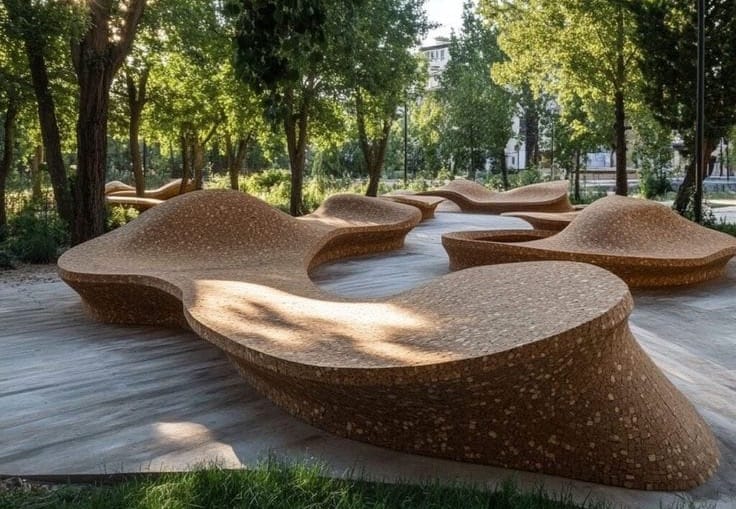
The association between nature and calm is now widely accepted. Time spent in natural environments has been shown to lower cortisol, improve mood, restore attention and reduce rumination. Yet much of this knowledge has been reduced to surface gestures in design: vertical gardens, plant walls, timber accents. The term biophilic design, originally intended to describe the integration of natural systems and patterns into the built environment, has too often been applied cosmetically.
At its core, however, biophilic design is not about greenery. It is about the conditions that nature creates: spatial, sensory and cognitive, and how those conditions support human functioning. Among these, contemplation has received relatively little attention. Most research focuses on recovery, productivity or stress regulation. But the ability to contemplate: to slow thought, reflect inward and process experience without interruption, is central to psychological stability and is often triggered by specific forms of natural engagement.
The biophilia hypothesis, popularised by Edward O. Wilson in the 1980s, proposed that humans have an innate tendency to seek connection with nature and natural forms. Building on this, scholars such as Stephen Kellert and colleagues developed frameworks for applying biophilic principles to design. These include both direct experiences of nature (e.g. light, water, vegetation) and indirect experiences (e.g. natural materials, biomorphic forms, spatial variability). Importantly, these principles were never intended as checklists, but as strategies to support cognitive and emotional needs. Among them, the need for mental restoration and depth.

Contemplative states tend to emerge in environments where stimulation is reduced, where views are open but not exposed and where rhythm is present without demand. Many of these conditions are found in natural landscapes: forests with soft ground, filtered light and subdued sound; coastal areas with distant horizons and repetitive waves, or high-altitude terrain with sharp air and minimal distraction. These environments slow the nervous system not only by offering respite from input, but by replacing it with coherent, low-complexity sensory fields. Attention relaxes, yet remains engaged.
Designers can learn from these patterns. According to Attention Restoration Theory (Kaplan & Kaplan), natural settings that are “fascinating” but not overwhelming - environments that draw attention softly, without requiring focused effort - are particularly effective at restoring cognitive capacity. This type of soft fascination is linked with reduced mental fatigue and improved reflection. In other words, it creates space for contemplation.
But this effect is not automatic. Simply adding natural features to urban spaces does not create contemplative conditions. The placement, scale and sensory impact of those features matters. A poorly considered green space next to a traffic corridor may contain trees but offer little peace. Likewise, a skylight in a noisy room might admit daylight without reducing cognitive load.

The most powerful applications of biophilic design are not visual; they are spatial and atmospheric. They consider light levels over time, the acoustics of vegetation, the modulation of enclosure and the way air or scent subtly shifts perception. A contemplative garden does not only provide somewhere to sit. It creates a condition in which time stretches and the self recedes.
In this sense, biophilic design should be re-centred around the qualities of natural environments that allow for withdrawal, reflection and presence, not just the visual signals of greenery. The goal is not to mimic nature, but to integrate its affordances into built form in ways that support the interior life.
As research continues to validate the psychological impact of nature-based environments, the task for design is not just to incorporate these elements, but to do so with intentionality, shaping environments that don’t merely restore energy, but create space for thought.

